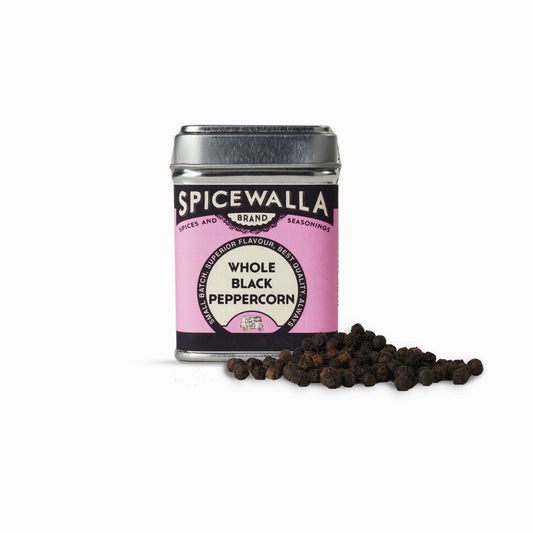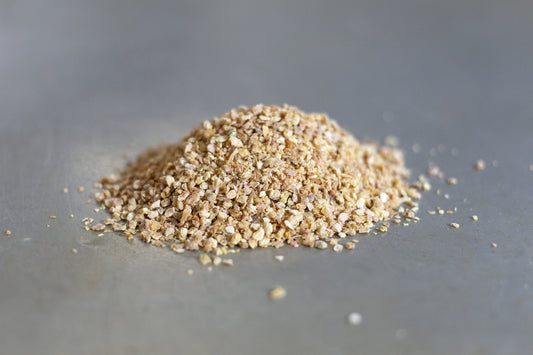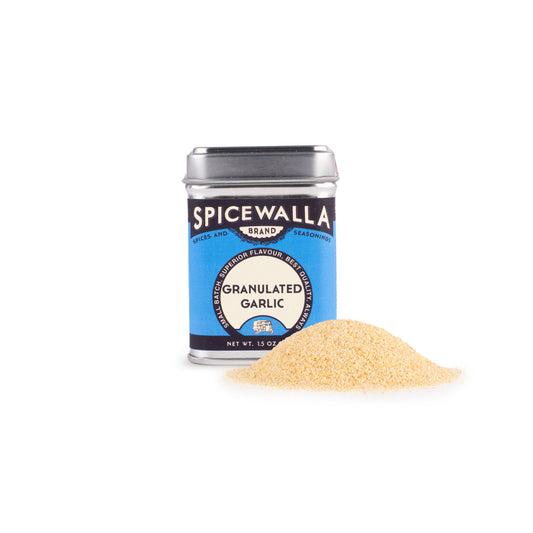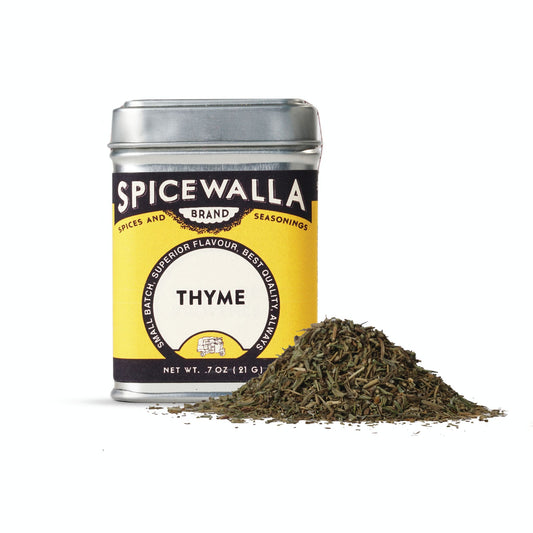SPICE ADVICE: BRINING SPICE
What does one do with Brining spice? What does brining even mean? What does one brine? What's the difference between a wet brine and a dry brine?
These (and more!) are questions every human heart desires to know, which is why we broke it down for you (see what we did there?). Read on for the juicy deets.
Brining, A History.
A culinary technique dating back centuries—long before the days of the days of white refrigerators and frozen foods—brining was originally developed as a way to preserve meat by preventing the growth of bacteria via “salt bath.”
Somewhere along the way, our ye olde brining enthusiasts noted that this method worked to not only preserved meat, but could help one achieve a supremely tender, flavorful bite compared to other meat prep/cooking methods.
The Science Behind the Brine.
So, how does brining do its thing? Osmosis baby!
Yep, your holiday bird prep involves a lot more science than you might think. Let’s break it down.
Brining is the process of seasoning and tenderizing a protein using salt mixed with other spices and flavors.
Chef’s choice on which herbs and spices you want to use in your brine. Or, you can use our go-to wet/dry brine blend and make your life a little easier, and tastier. Our blend combines Spicewalla Black Peppercorn, Spicewalla Coriander, Spicewalla Fennel, Spicewalla Thyme, Spicewalla Rosemary, Spicewalla Bay Leaves, and more!
Over time the salt will absorb into the meat through the process of osmosis and break down the protein strands to prevent them from contracting when cooked and releasing its juices.
This process takes at least 24 hours but yields a well seasoned and tender turkey. A.K.A. it’s 💯 worth it.
Wet Brine vs Dry Brine: Everything You Need to Know
Choosing between a wet brine & a dry brine can feel like a culinary showdown, but it’s really about finding what works best for your turkey goals. Both methods bring their own unique magic to the table: wet brining amps up the juiciness with a flavour-infused soak, while dry brining delivers crispy skin & rich, concentrated seasoning with less fuss.
Whether you’re dreaming of a tender, juicy bird or one with that golden, crunchy exterior, this guide breaks down the pros, cons, & flavour-packed benefits of each method ✅
Let’s dive in & get your bird brine-ready!
What Is a Wet Brine?
Wet brining takes your turkey for a swim in a salty, seasoned water bath. This method is perfect if you’re after meat that’s extra juicy, even in notoriously dry areas like the breast.
The salt in the brine changes the protein structure of the meat, helping it retain moisture while infusing it with all those warm, comforting spices.
It’s a bit more involved—hello, large stockpot—but the results are well worth it if you’ve got the space & patience.
What Is a Dry Brine?
A dry brine is the ultimate no-fuss option for anyone short on fridge space but big on crispy skin goals.
Instead of submerging your turkey in a salty solution, you rub a blend of salt, spices, & herbs directly onto the skin (and under it—don’t skip this step). The salt works its magic by drawing moisture out of the meat, which then dissolves the salt & gets reabsorbed, locking in flavour & tenderness.
Bonus? You’ll get that picture-perfect crispy skin everyone fights over.
Is Dry Brine or Wet Brine Better for Turkey?
It all depends on your priorities.
Want the crispiest skin & a simple setup? Dry brine is your MVP.
Hoping for ultra-juicy meat with a hint of citrusy zing? Wet brine’s your bird.
Both methods deliver incredible flavour, especially when you’re using the Spicewalla mix that's packed with aromatic all-stars like black peppercorn, pink peppercorn, & cinnamon sticks.
How to Dry Brine a Turkey
Dry brining is as easy as mix, rub, & chill (literally). Combine our spice blend with kosher salt, pat your turkey dry, & rub it down like you’re giving it the spa treatment.
Don’t forget the cavity & under the skin—that’s where the magic happens. Then pop it in the fridge uncovered for at least 12 hours or up to 24 hours.
The result? A bird that’s seasoned to perfection with skin that’s crispier than your holiday playlist.
How Long to Dry Brine a Turkey?
We recommend at least 12 hours, but if you can swing 24, you’ll be rewarded with even deeper flavour.
Just don’t go beyond that—too much of a good thing can make your bird overly salty.
How to Wet Brine a Turkey
Wet brining is like giving your turkey a luxurious spa day—it’s all about soaking it in flavour & tenderness.
Start by mixing up a brine that’s equal parts savoury & aromatic: water, kosher salt, & your Spicewalla spice blend (think black peppercorns, fennel seed, & cinnamon sticks for that warm, holiday vibe). Bring the mixture to a boil to dissolve the salt & release the spices’ oils, then let it cool completely—this step is crucial to avoid pre-cooking your bird.
Once the brine is chilled, submerge your thawed turkey in it, ensuring it’s fully covered.
Pro tip: add some orange or lemon peels for a citrusy twist. Pop the whole setup in the fridge, and let the brine do its thing.
How Long to Wet Brine a Turkey?
Timing is key when it comes to wet brining.
A good soak should last anywhere from 12 to 24 hours, depending on the size of your turkey. Larger birds benefit from the full 24 hours to ensure the brine has time to work its magic on every bite.
But don’t overdo it—brining for too long can make the meat overly salty or mushy. Once the clock runs out, remove the turkey from the brine & pat it dry with paper towels.
Drying the skin is a must for that coveted crispy finish when roasting. After that, it’s time to let your brined beauty shine in the oven!
3 Additional Tips for Leveling Up Your Bird This Year!
- If you’re working with a frozen turkey, make sure it is completely thawed before brining. This may take up to 24 hours in the fridge.
- Basting: baste the turkey every 15-20 mins after the skin begins to take on some color in order to make sure it does not get dried out. We prefer to keep a small pot of melted butter on the stove to brush on the turkey!
- Resting: this is a VERY important step in order to have the best result, make sure the turkey rests covered with tin foil for at least 30-45 minutes before carving. If carved too soon the turkey will release all its juices and dry out the meat, reversing all that work you did!













1 comment
I just your Spicewalla Brine. I’m going to dry brine my turkey for a couple days. Question is, can I bake it with spicewalla rub still on it, or wash it off?